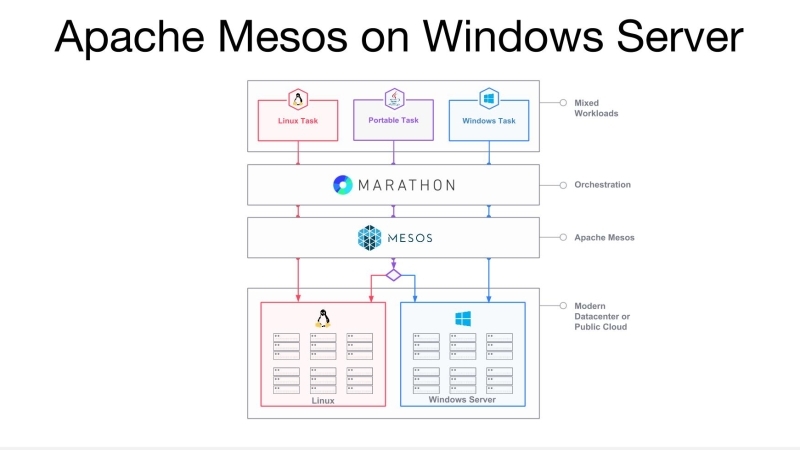This week at MesosCon, Mesosphere and Microsoft announced a joint effort by the two companies to port Apache Mesos to Windows Servers. Like many popular open source technologies, Mesos is today most popular on Linux servers. What most people don't realize, however, is the huge presence of Windows Server. According to IDG, in 2014, Windows Server and Linux servers combined represented 99 percent of the total market for shipped servers.
I recently spoke with Microsoft Azure CTO Mark Russinovich about why Mesos -- and open source in general (Microsoft, for example, is also working to port Docker to Windows) -- is important to Microsoft and the Windows community. The full version of our discussion is available on SCALE, but here's what Russinovich had to say about Mesos. You can
read the Microsoft blog post on this news here.
ME: What's your take on technologies such as Mesos and Mesosphere, and the kind of role they will play in the datacenter or cloud going forward?
MARK RUSSINOVICH: I think once you get above the unit of application deployment and management, which is becoming standardized on Docker containers, you start to talk about orchestrating the pieces of an application. Commonly, we're seeing a microservices application pattern, where the application is broken up into components and each component consists of one or more instances. Those instances would be packaged as Docker containers and then deployed across a cluster of physical or virtual resources.
So the place where we're seeing a lot of innovation now is around container orchestration or cluster management layer.
Mesos is one of the very popular technologies that we see there.
What's the relationship between containers, Mesos and virtual machines?
I think they're actually synergistic. What happens is you create this pool of physical resources -- physical servers or virtual machines that make available the RAM, CPU and other server resources -- and then you schedule these microservices onto that pool. They're much lighter-weight and fine-grained units of allocation. The virtual machines -- whether cloud instances or more traditional VMs -- make a very nice substrate as a cluster for deploying containerized microservices.
Microsoft and Mesosphere have successfully ported Mesos onto Windows. Why is this significant?
It's significant because the orchestration layer is the place where we're seeing a lot innovation and need for tooling and support for these new cloud application models. Mesos is a very popular option here, and bringing Mesos's capabilities to Windows unlocks this new style of orchestration for Windows developers. And any organization that has applications mixed between Linux and Windows servers can now allocate a pool of resources and them manage them holistically using the same interfaces and the same deployment technologies. So we're really excited about bringing that to the Windows world.
The integration of Mesos and Windows is part of our overall openness and choice strategy that we've adopted in Azure and have been operating under for a long time. We want to make available technologies that our customers want, where they want them.
We've
already supported Mesos on top of Azure, something that was done using the resource group templates that we co-developed with Mesosphere. That's an example of bringing Linux technologies and Mesos onto the Azure platform because our customers were asking for it.
This is not an isolated occurrence. We're working with companies across Linux, open source, proprietary software and everything in between. It's really about giving our customers choice.
Mesos, plus Marathon, Chronos and everything else that has been ported to Mesos is enabling technology. You need that to deploy applications. What DCOS brings on top of that is management of the applications and management of the Mesos cluster, which really makes it much easier to operate than if you're just using the raw tooling.
Catch us at MesosCon this week in Seattle to hear more about Mesos on Windows.



